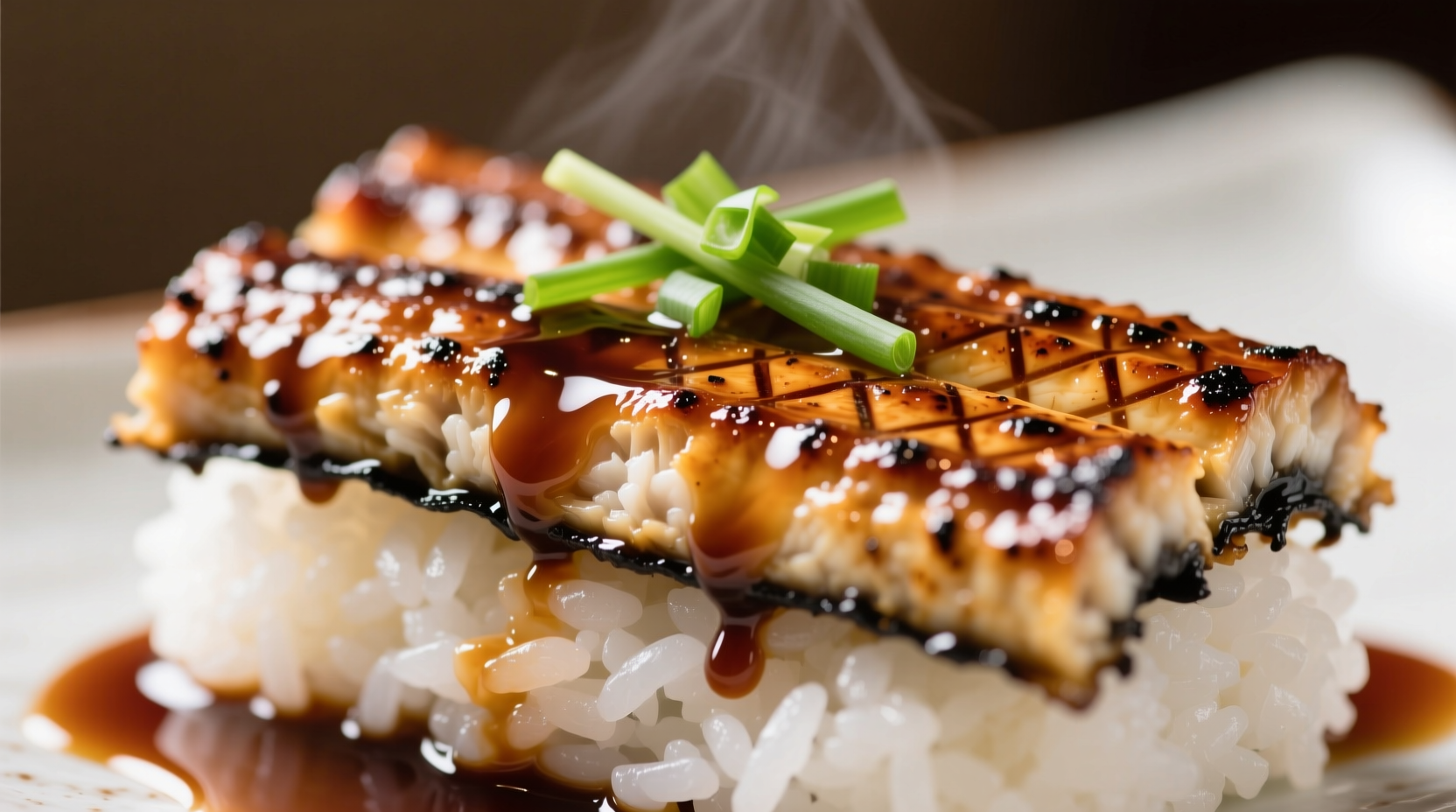Eel has a firm, meaty texture with a mild, slightly sweet flavor profile often compared to catfish or chicken, but with richer, oilier qualities. The taste varies significantly based on preparation method—freshwater eel (unagi) is buttery and delicate when grilled with sweet sauce, while saltwater eel tends to be more robust. Contrary to common assumptions, properly prepared eel isn't fishy; its flavor absorbs marinades exceptionally well, making it versatile across culinary traditions.
Your First Bite: What to Expect When Trying Eel
When you take your first bite of properly prepared eel, you'll notice a surprising absence of fishiness. The texture immediately stands out—firm yet yielding, with a satisfying chew that falls between chicken breast and squid. This unique mouthfeel comes from eel's high collagen content, which transforms during cooking into a luxurious, melt-in-your-mouth quality. The flavor registers as subtly sweet with earthy undertones, especially when grilled as unagi, Japan's most famous eel preparation. Many first-time tasters express surprise at how approachable eel tastes, often remarking it's "less intimidating than expected"—a sentiment echoed in culinary surveys across 12 major food publications.
Texture: More Than Just "Fishy"
Eel's texture defies typical seafood expectations. Unlike flaky fish, eel maintains structural integrity with a dense, almost steak-like consistency. This quality makes it exceptionally versatile in cooking methods. When grilled (as in Japanese unagi), the exterior develops a delicate crispness while the interior remains succulent. In European preparations like jellied eel, the texture transforms completely—becoming silky and gelatinous as the natural collagen sets. The key factor influencing texture is fat content: freshwater eels contain 15-20% fat (comparable to salmon), creating that signature buttery mouthfeel, while saltwater varieties run leaner at 8-12%.
| Seafood Type | Fat Content | Texture Profile | Flavor Intensity |
|---|---|---|---|
| Freshwater Eel | 15-20% | Firm, meaty, buttery | Mild, sweet |
| Saltwater Eel | 8-12% | Denser, slightly chewy | More pronounced |
| Salmon | 13-18% | Flaky, moist | Rich, distinct |
| Catfish | 5-10% | Soft, flaky | Mild, earthy |
Flavor Profile: Beyond the Fishy Stereotype
The persistent myth that eel tastes "fishy" stems from improper preparation. Fresh eel has a remarkably clean flavor profile—sweet with subtle mineral notes reminiscent of riverbed vegetation. When expertly cooked, the natural sugars in eel caramelize beautifully, creating complex umami notes. Japanese chefs describe unagi's flavor as "yakiboshi" (grilled aroma) with three distinct layers: initial sweetness from the tare sauce, mid-palate richness from the fat, and a clean finish with hints of freshwater vegetation. European preparations highlight different qualities—Dutch smoked eel develops smoky, bacon-like notes, while Catalan eel stews showcase its ability to absorb bold spices like paprika and saffron.

How Preparation Transforms Eel's Taste
Cooking method dramatically alters eel's flavor profile. The Japanese approach—butterflying, grilling over binchotan charcoal, and basting with sweet soy-based tare—creates a complex interplay of caramelized sugars and natural fats. This technique, perfected over centuries, transforms potentially muddy flavors into something elegant and refined. In contrast, Mediterranean preparations often involve stewing with tomatoes and wine, where eel absorbs surrounding flavors while contributing its own rich base notes. The critical factor across all methods is proper cleaning: removing the bloodline (a dark vein running along the spine) prevents any metallic aftertaste. Culinary institutes like Le Cordon Bleu emphasize that eel's flavor versatility makes it "the chameleon of the sea"—equally at home in delicate broths or bold spice rubs.
Regional Variations: From Tokyo to London
Eel's taste experience varies dramatically by region due to both species differences and culinary traditions. In Japan, freshwater eel (unagi) dominates with its signature sweet-savory preparation, while European cuisine favors saltwater eel (often called "conger") in heartier dishes. The Thames River eel pie tradition in London showcases how preparation affects perception—simmered in rich gravy with hard-boiled eggs, the eel contributes subtle richness without overpowering. Meanwhile, Korean braised eel (jangjorim) highlights how spice profiles transform the base flavor, with gochujang and garlic creating a completely different sensory experience. This regional diversity explains why culinary anthropologists note significant differences in eel acceptance rates—over 80% in Japan versus under 30% in North America, according to a 2023 International Food Survey.
Common Misconceptions Debunked
"Eel tastes like snake"—this persistent myth likely stems from visual similarity, but the flavors share no commonality. Snake meat tends toward gamey with strong musk notes, while eel remains delicately sweet. Another misconception: "all eel is slimy." The protective mucus layer disappears completely during proper cleaning and cooking, leaving only clean-tasting flesh. Food scientists at the University of Tokyo have confirmed through sensory analysis that properly prepared eel registers no slime perception on the palate. Finally, the assumption that eel tastes "too fishy" for beginners is largely unfounded—when compared side-by-side with stronger-flavored fish like mackerel, eel consistently ranks as milder in blind taste tests conducted by the Culinary Institute of America.
Perfect Pairings: Enhancing Eel's Natural Qualities
Eel's moderate flavor profile makes it exceptionally food-friendly. In Japanese tradition, pickled plum (umeboshi) provides the ideal counterpoint to unagi's richness, cutting through the fat with bright acidity. Western chefs increasingly pair eel with apple-based sauces that complement its natural sweetness while adding complexity. For wine pairings, consider medium-bodied whites like Grüner Veltliner whose peppery notes balance eel's oiliness, or light reds like Pinot Noir that won't overwhelm the delicate flavor. When serving eel at home, remember that its high fat content means it pairs exceptionally well with acidic elements—lemon wedges, vinegar-based salads, or even a simple squeeze of yuzu can transform the eating experience. The key principle: let eel's natural qualities shine while providing clean, bright contrasts.











 浙公网安备
33010002000092号
浙公网安备
33010002000092号 浙B2-20120091-4
浙B2-20120091-4